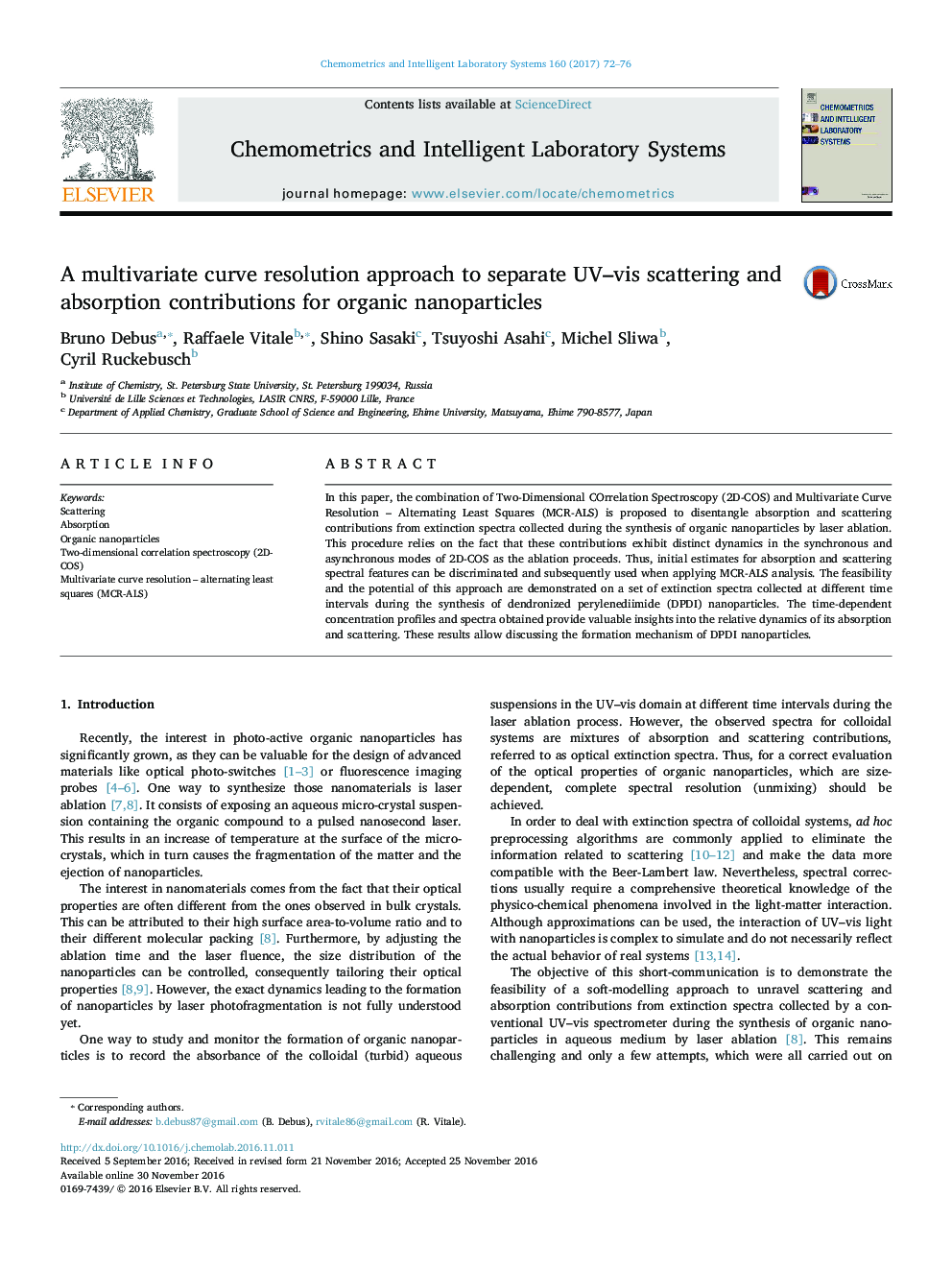| Article ID | Journal | Published Year | Pages | File Type |
|---|---|---|---|---|
| 5132279 | Chemometrics and Intelligent Laboratory Systems | 2017 | 5 Pages |
â¢Optical spectra of organic nanoparticles are strongly distorted by scattering.â¢A method based on 2D-COS is proposed to estimate scattering from the raw spectra.â¢MCR-ALS and 2D-COS estimates are used to separate absorption from scattering.â¢This strategy is applied to study DPDI nanoparticles synthesis by laser ablation.
In this paper, the combination of Two-Dimensional COrrelation Spectroscopy (2D-COS) and Multivariate Curve Resolution - Alternating Least Squares (MCR-ALS) is proposed to disentangle absorption and scattering contributions from extinction spectra collected during the synthesis of organic nanoparticles by laser ablation. This procedure relies on the fact that these contributions exhibit distinct dynamics in the synchronous and asynchronous modes of 2D-COS as the ablation proceeds. Thus, initial estimates for absorption and scattering spectral features can be discriminated and subsequently used when applying MCR-ALS analysis. The feasibility and the potential of this approach are demonstrated on a set of extinction spectra collected at different time intervals during the synthesis of dendronized perylenediimide (DPDI) nanoparticles. The time-dependent concentration profiles and spectra obtained provide valuable insights into the relative dynamics of its absorption and scattering. These results allow discussing the formation mechanism of DPDI nanoparticles.
